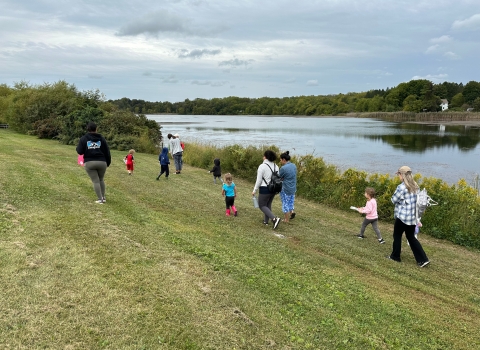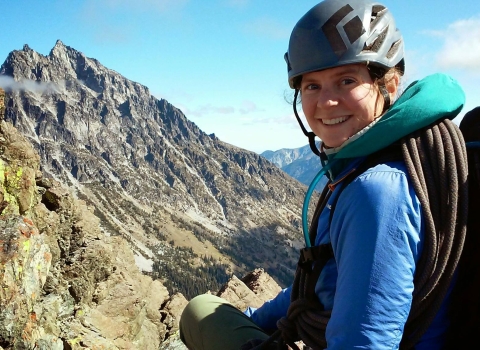In 2022, the U.S. Fish and Wildlife Service’s Partners for Fish and Wildlife Program assisted more than 100 private landowners with the voluntary restoration of 5,692 acres of forest, prairie, wetland and stream habitat for wildlife in Texas.
From a watershed-level salt cedar eradication on a tributary of the Brazos River to the repair of a wetland complex that supports a variety of waterfowl and whooping cranes on the Texas coast, these projects help protect a diversity of species in ecosystems across the state.
“With most of the land in Texas in private ownership, partnering with willing landowners is crucial to maintaining healthy habitat for plants and wildlife,” said Cyndee Watson, the Partners for Fish and Wildlife Program State Coordinator for Texas. “We are proud to help fund and design projects that protect and improve habitat for native wildlife while supporting healthy working lands in the state.”
Following are highlights of Partners for Fish and Wildlife projects completed across the state in 2022.
Mid-Coast
On the Mid-Coast, the Partners for Fish and Wildlife Program completed nine projects to restore habitat on a total of 388 acres in 2022.
In Calhoun County near Aransas National Wildlife Refuge, program biologists worked with the Texas Prairie Wetland Program (TPWP) to repair a damaged water control structure structure
Something temporarily or permanently constructed, built, or placed; and constructed of natural or manufactured parts including, but not limited to, a building, shed, cabin, porch, bridge, walkway, stair steps, sign, landing, platform, dock, rack, fence, telecommunication device, antennae, fish cleaning table, satellite dish/mount, or well head.
Learn more about structure on a 50-acre wetland located in a large 430-acre wetland complex. The successful completion of the project resulted in the wetland complex being functional and capable of supporting 16 species of waterfowl including mottled duck, lesser scaup, and northern pintail. In addition, the complex is positioned in the wintering range of the endangered whooping crane and is known to support these birds.
“This project benefitted the landowner by providing summer forage for their cattle, while providing winter wetland habit for dozens of species of birds,” said Partners for Fish and Wildlife Program biologist Chad Stinson. “If you can prove to a private landowner that conservation can benefit them, they will be more than happy to help.”
East Texas
InEast Texas, the Partners for Fish and Wildlife Program completed six projects to restore habitat on a total of 730 acres in 2022.
In Newton County, program biologists worked with The Longleaf Alliance to provide cost-assistance to restore approximately 240 aces of longleaf pine. Longleaf pine restoration and the prescribed burning associated with its management helps to improve habitat for a variety of wildlife, including the red-cockaded woodpecker, Louisiana pinesake, eastern wild turkey, northern bobwhite, American woodcock, white-tailed deer, and a myriad of non-game species including Bachman’s sparrow. The project also benefits the public by improving water quality, improving retention and gradual release of flood waters, reducing soil erosion and run-off, providing better storage of carbon dioxide in forest biomass, and providing high-quality wildlife habitat.
Panhandle
In the Panhandle, the Partners for Fish and Wildlife Program completed 41 projects to restore habitat on a total of 519 acres in 2022.
In Stonewall County, the program worked with the Natural Resources Conservation Service on a project directed at watershed-level salt cedar eradication in Salt Creek. The creek is a tributary of the Brazos River and critical habitat for the endangered smalleye shiner and sharpnose shiner. All 22 landowners within the watershed participated in the project, which resulted in nearly 65 miles or 25,000 acres of salt cedar treatment along the watershed’s drainages.
Mid to Lower Coastal Prairie
On the Mid to Lower Coastal Prairie, the Partners for Fish and Wildlife Program completed one project to restore habitat on a total of 200 acres in 2022.
Program biologists and the Coastal Bend Bays & Estuaries Program worked with the landowner to enhance the project site's monarch butterfly, migratory bird, and potential Attwater's prairie chicken habitat by reducing brush (primarily live oak) abundance through herbicide and prescribed burning treatments.
Northeast Texas Cross Timbers and Blackland Prairie
In the Northeast Texas Cross Timbers and Blackland Prairie region, the Partners for Fish and Wildlife Program completed 38 projects to restore habitat on a total of 1,539 acres in 2022.
Through the Pastures for Upland Birds Program (PUB), a cooperative agreement between the Partners for Fish and Wildlife Program and the Texas Parks and Wildlife Department, staff provide cost-share incentives and technical guidance to private landowners to restore native prairie to pastures and hayfields dominated by exotic grasses such as Bermudagrass, bahiagrass, and Old World bluestems. Native prairie vegetation established through PUB increases biological diversity and provides habitat for resident, breeding, migrating, and wintering bird populations.
Central to West Texas
In Central to West Texas, the Partners for Fish and Wildlife Program completed seven projects to restore habitat on a total of 382 acres in 2022.
In Brewster, Terrell, Pecos, Reeves, Culberson, Hudspeth, Jeff Davis and Presidio Counties, the program partnered with the Borderlands Research Institute to provide financial assistance that helps private landowners conduct habitat restoration through the Partners for Habitat Program.
Northeast and East Texas
In Northeast and East Texas, the Partners for Fish and Wildlife Program completed one project to restore habitat on a total of 410 acres in 2022.
Statewide
The Partners for Fish and Wildlife Program in Texas also partners with the Texas Parks and Wildlife Department’s Texas Landowner Incentive Program to help meet the needs of private, non-federal landowners wishing to enact good conservation practices on their lands for the benefit of healthy terrestrial and aquatic ecosystems. In 2022, this partnership assisted with six projects benefiting more than 1,524 acres in the Trans-Pecos and Edwards Plateau regions of Texas.
The Partners for Fish and Wildlife Program works with managers, tribes, corporations, schools and nonprofits interested in improving wildlife habitat on their land. The program provides funding and technical assistance that the landowners match, commonly with in-kind labor and a commitment to maintain the habitat for a period of time, usually 10 years.
Projects are voluntary and customized to meet landowners’ needs. Participating landowners continue to own and manage their land while they improve conditions for wildlife.
Partners for Fish and Wildlife Program staff assist with the plan, design, supervision and monitoring of customized habitat restoration projects, which can include livestock exclusion fencing, alternate water supply construction, streambank stabilization, restoration of in-stream aquatic habitats, longleaf or shortleaf pine planting, prescribed burning, native grass and forb planting, wetland restoration/enhancement and riparian riparian
Definition of riparian habitat or riparian areas.
Learn more about riparian reforestation.
Private landowners in Texas can learn more and schedule an initial site visit with the Partners for Fish and Wildlife Program by contacting state coordinator Cyndee Watson.









